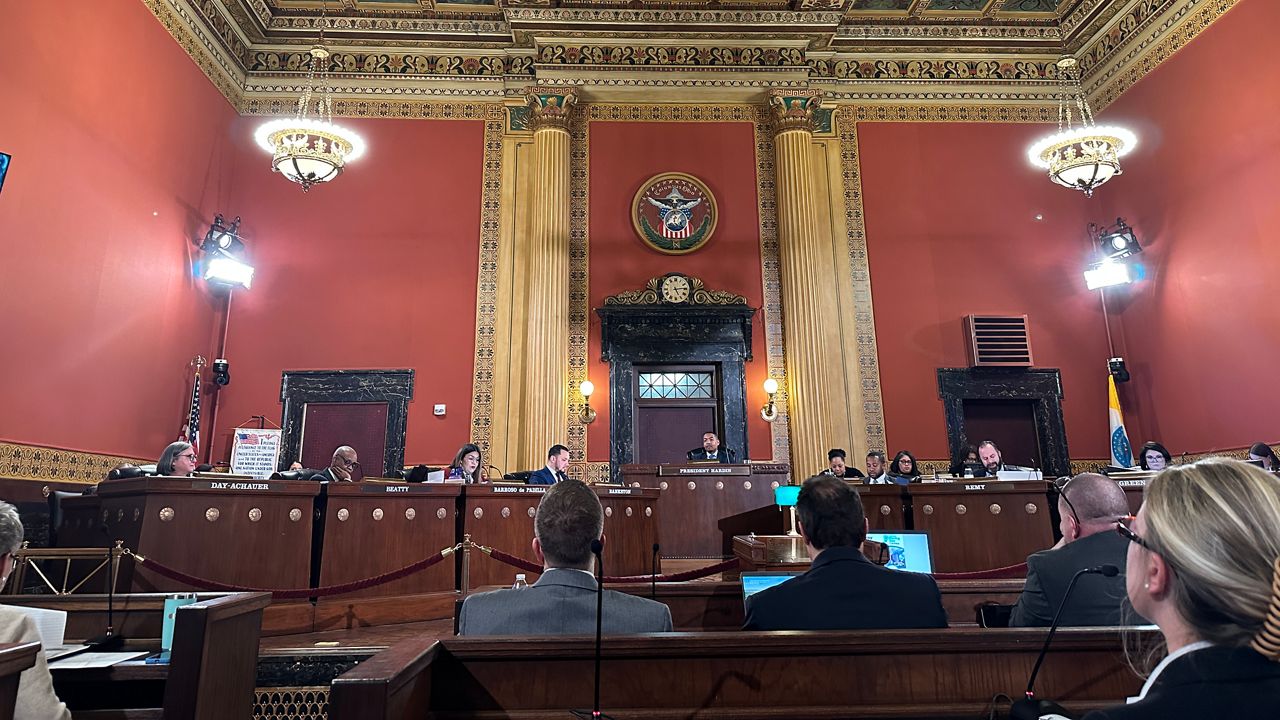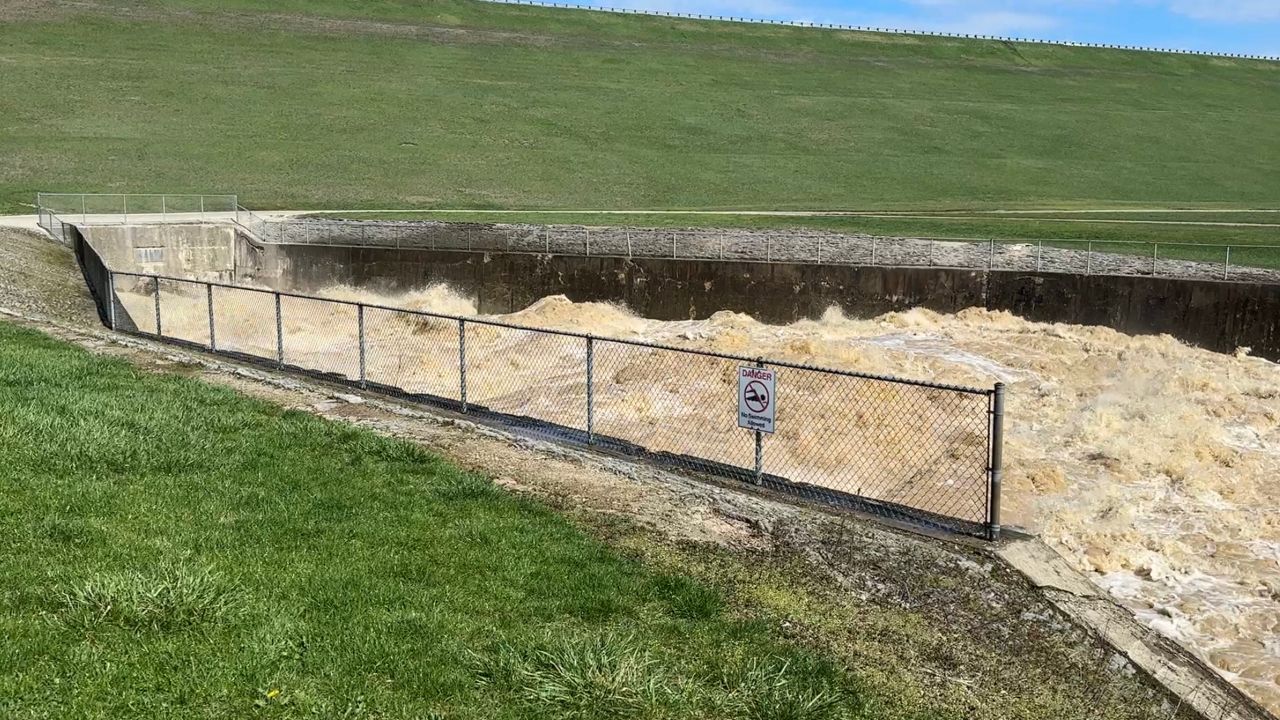Part 2 of Spectrum News 1's series "The Year in Farming"
WOOD COUNTY, Ohio —The weather can be a farmer's best friend, or worst enemy.
- The extreme wet weather had a major effect on the livelihood of farmers in northwest Ohio
- According to data from the USDA, almost half of farming acres in Wood County were unplanted because of weather
- Just over 1.4 million acres went unplanted statewide because the ground was simply too wet
And as the debate around climate change continues, northwest Ohio's farmers experienced the extremes of nature's wrath in 2019.
“2019 was one of the most unusual years I have ever witnessed. I have never experienced anything like this,” said Paul Herringshaw, farmer.
Paul Herringshaw and his son Brian own a family farm in Wood county, near Bowling Green State University.
Normally their fields would be filled with corn and soybeans nearly ready for harvest.
But not this year.
“We had just over 2,000 acres of corn and soybeans that we had intended to plant, and we got about 325 total acres planted. So, about 15 percent of what we intended to plant this season got planted,” said Paul Herringshaw.
Plans for this year's crop yields were washed away by the heavy rains that continued well into planting season.
“It's really been a struggle, that we've had to adapt a lot to multiple different things, so we're talking the weather and our equipment and our finances and our insurance and the markets. So, it was really just a lot of things at once,” Brian Herringshaw said.
Wood County farmers like the Herringshaws are working to save what could be planted and prepare for next year.
Ohio State climate researcher Aaron Wilson says the weather caused similar issues across the region.
“Really leading to some challenges in our fields this year. Not being able to plant, getting things out late. Just a slow development,” said Wilson.
According to data from the USDA, almost half of farming acres in Wood County were unplanted because of weather.
And just over 1.4 million acres went unplanted statewide because the ground was simply too wet.
“When it rains every other day and there is no sunshine, the ground has no time to dry out. And the biggest thing is that with equipment, even with small equipment, you can't go out and plant into mud,” said Brian Herringshaw.
Spectrum News 1 Chief Meteorolgist Eric Elwell has followed the weather events of the last growing year and says that rainfall totals for the first part of 2019 hit extreme levels.
“For parts of western and particularly northwestern Ohio, we saw almost a year's worth of rainfall in about 2-3 months,” said Elwell.
And April and May were hard hit.
“Into May.. we really start amping up the totals here in Columbus and westward up through Fort Wayne …now we are talking amounts from 10 up to 15 inches,” said Elwell. “So, we had incredible amounts of rain in western and northwestern Ohio.
“You know, you can't always help but wonder, what can we do to help mitigate the situations that are unfolding? How do cover crops fit into this?” said Paul Herringshaw.
One way – to plant cover crops like clover, and a tilling process to help the corn grow next year.
“You see kind of an interesting mix of me strip-tilling in this over crop because I'm trying to solve one of those problems of getting good emergence with my corn into a standing crop. So, it's very complicated, is the bottom line,” said Brian Herringshaw.
The Herringshaws say they are fortunate to have crop insurance that reduced the loss, but it doesn't fix everything.
“You don't go ahead by collecting insurance payments. The best we can hope for is to just stand still. And that is not what you want to be doing, you want to be growing, but it is what it is,” said Paul Herringshaw.
The impact for them and the community will not only be felt this harvest season, but possibly years to come.
Lower corn and soybean yields means less feed for livestock.
“They will get them fed they will figure out some rations,” said Paul Herringshaw. “But the normal flow of corn and hay which the alfalfa didn't survive the winter very well, it has been interrupted,” said Paul Herringshaw.
And long-term effects could trickle down to support businesses, like co-ops, grain processers or equipment dealers.
“It will be next year that's gonna be the issue for a lot of these businesses to make it through. It's gonna be widespread and it's gonna take several years to heal from the damage of this,” said Brian Herringshaw.
Looking forward, the best-case scenario for farmers is to continue the unseasonably warm weather as long as possible.
“We're kind of keeping an eye on that,” said Wilson. “Some folks need a good three weeks to a month to reach that ultimate maturity. So, the longer into October we go, the better off farmers are going to be for reaching that maturity for corn and soybean crops.”
Elwell says more warm weather is likely, but for how long and how dry is unknown.
“It's pretty rare to go into October with 90-degree temperatures… it does look like we will do that,” said Elwell. “But we do see signs that the pattern will change, somewhere around the 4th through the 7th of October, where we go back into a cooler pattern, a more typical pattern. It's unclear if we will go back into a rainy pattern.”
The Herringshaws have, so far, weathered 2019 the best they could, but the impact for them and the community won't go away anytime soon.
“It is going to take a little while for things to settle out and make whole again. We will survive…that's not the argument, but it will make life difficult,” said Paul Herringshaw.
And if the wet trends continue into next growing season...
“It does make you wonder how many more years similar to this or the year before you can handle,” said Brian Herringshaw.










